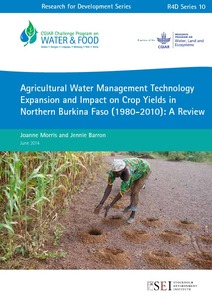Agropastoral systems for the tropical savannas of Latin America
Agent-based land use models for teaching extension and collaborative learning
Agrarian Straightjacket: Constraints to Achieve Yield Potential in Rice
The coastal zone of Bangladesh is the most vulnerable region of the eastern Ganges basin, occupies about 30% (46,000 km2) of the country’s land area and is home to some of the world’s poorest and most food insecure 39 million people, whose livelihoods depend primarily on agriculture and aquaculture. Key challenges to both agricultural and aquacultural productivity include excessive flooding during the rainy season, lack of access to fresh water and soil salinity during the dry season, and severe cyclonic storms and tidal surges throughout the year.
Agricultural land management: Capturing synergies among climate change adaptation, greenhouse gas mitigation, and agricultural productivity
Agricultural Water Management Technology Expansion and Impact on Crop Yields in Northern Burkina Faso (1980-2010): A Review
Agricultural water management (AWM) interventions, such as soil and water conservation or small-scale irrigation around small-scale water reservoirs, have repeatedly shown benefits to yields, soil fertility and water availability – at the field and experimental farm scale. It is assumed that these benefits will result in better and more sustainable livelihoods. However, there has been little published evidence of such wide-scale beneficial impacts.
An approach to account for multi-level governance in land and water access for poverty reduction in the Limpopo Basin
An explanatory manual for CIAT's computerized land resource study of Tropical America
An overview of post-extraction secondary forests in Indonesia
Indonesia has extensive areas of post extraction secondary forests and degraded lands arising from intensive exploitation of forest resources in recent decades. Using the area of forests resulting from selective logging practices as an estimate, in year 2000, post extraction secondary forests covered about 23 million ha, or about 55% of the total concession area.







